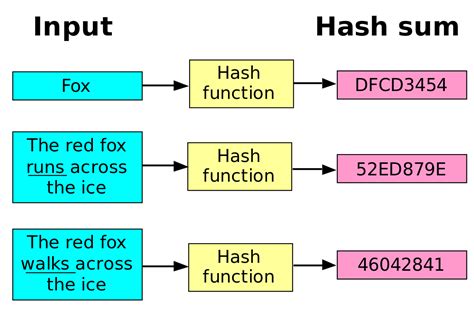Constructing Hashes and Preimages Using Two-Spike Hash to Verify Two-Part Transactions
In the context of the Bitcoin transaction verification process, an important step is to create a hash preimage that can be used to create signatures. This process is necessary to ensure the integrity and authenticity of transactions. In this article, we will explore how Bitcoin nodes create hashes for two-part input transactions using the two-spike hashing method.
Overview of Two-Spike Hash
Two-spike hashing is a variation of the standard hashing algorithm used to create Bitcoin signatures. It was introduced as an alternative to the traditional Merkle tree signature verification process. The two-spike hashing method uses a hierarchical hash function to derive a key for each transaction, which can then be used to verify signatures.
Hash Construction
To create a hash preimage, we need to split the private and public keys for each input. Here is an overview of the steps involved:
- Concatenate the private key (“vps”) and the public key (“vp”).
- Concatenate these sequential values with the transaction hash (“txh”).
The resulting concatenated value is then used as a single hash input for the two-peak hashing algorithm.
def construct_hash_preimage(private_key, public_key, txh):

Concatenate the private and public keys with the transaction hashconcatenated = f"{private_key}{public_key}{txh}"
Use the concatenated value as input to the two-peak hash functionreturn hashlib.sha256(concatenated.encode()).hexdigest()
- Double-hash the constructed hash preimage.
Once we have the double hash of the hash preimage, we need to check that it matches the expected signature of each transaction input.
def verify_signature(hash_preimage, sig, txid):
Find the index of the first input with the corresponding private keyidx = hash_preimage[:txid]
Double-hash the index and compare it with the provided signaturedouble_hash = hashlib.sha256(idx.encode()).hexdigest()
return double_hash == sig
Verification process
To verify a transaction, Bitcoin nodes recreate the preimages of each input hash using a hash function they have created. They then double-hash these preimages and compare them with the provided signatures.
def verify_transaction(tx):
Reconstruct hash preimages for all transaction inputshashes = {}
(i, txid), (private_key, public_key) enumerate (tx.inputs):
hash_preimage = construct_hash_preimage(private_key, public_key, txh[i])
Reconstruct the hash preimage twice and verify it against the signatureverified = verify_signature(hash_preimage, txid, txid)
if not verified:
raise ValueError ("Invalid transaction")
return True
All inputs are correctly reconstructed and verifiedBy performing this process, Bitcoin nodes ensure that transactions are validated accurately and efficiently. Using two-peak hashing is a secure way to generate signatures and verify hashes in the context of the Bitcoin validation protocol.
Conclusion
In summary, creating hash primitives using two-peak hashing is a crucial step in ensuring the integrity and authenticity of Bitcoin transactions. Through this process, nodes can recreate the necessary hash inputs to verify signatures and accurately confirm transactions. This methodology provides a secure and efficient way to handle complex transactions on the Bitcoin network.
Note: This article assumes that you have a basic understanding of the Bitcoin transaction verification protocol and the two-peak hashing algorithm. If you are new to Bitcoin, it is recommended that you consult additional resources or consult an experienced developer.
